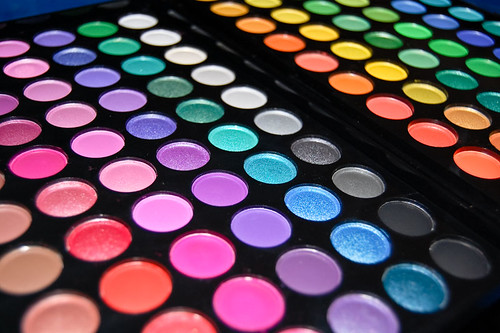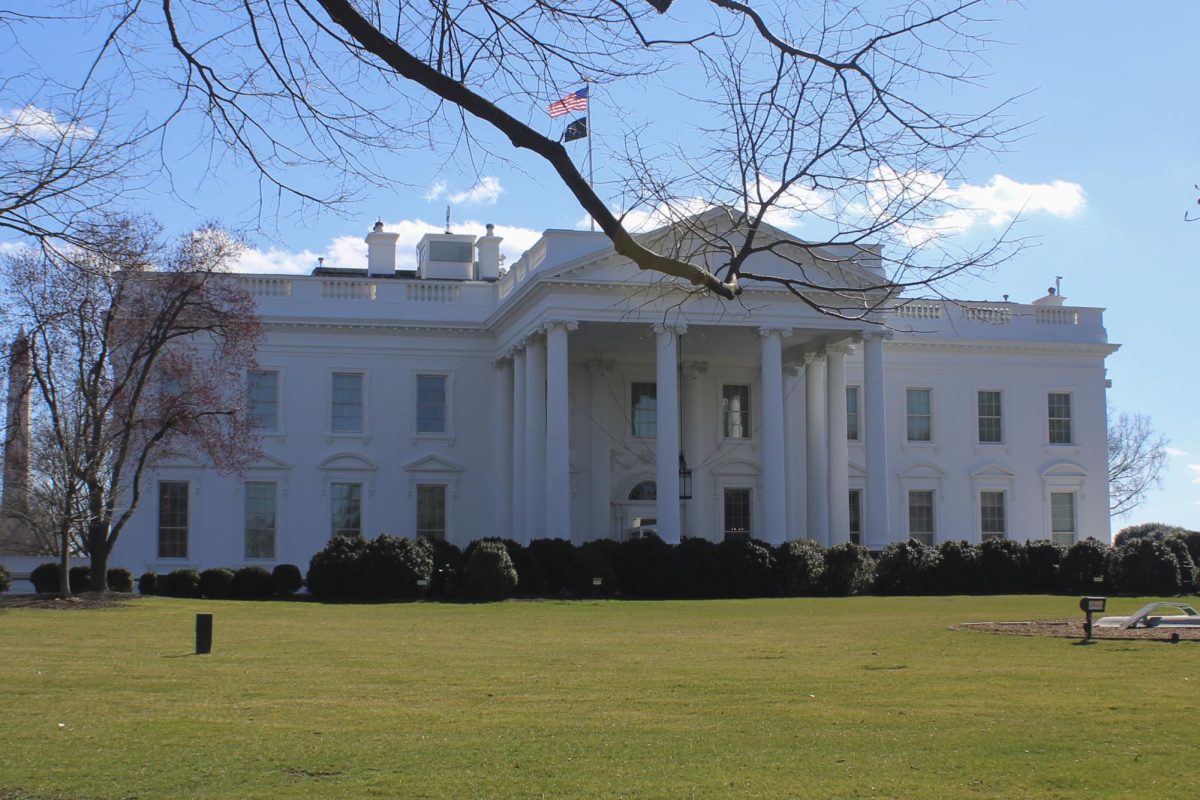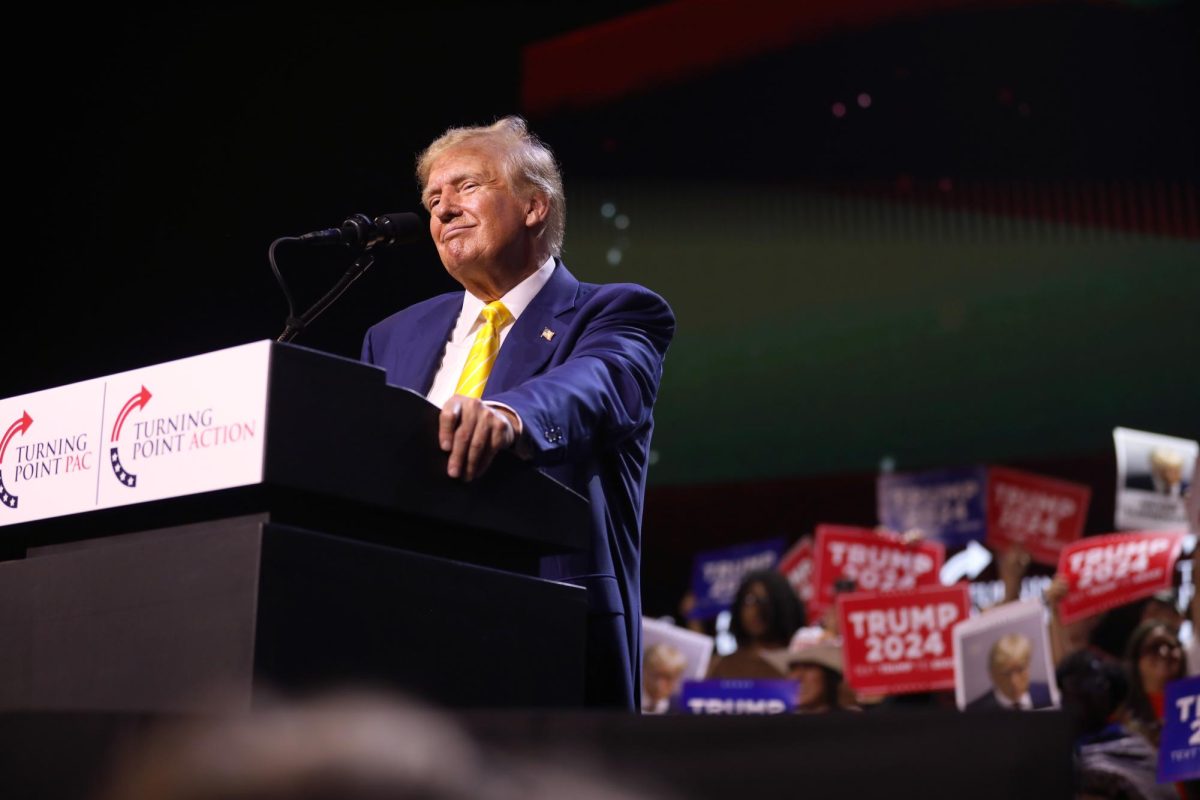Column: Colorful makeup trends challenge today’s beauty standards

“120 Colors Eyeshadow Palette”by Dearlova ♥ is licensed under CC BY-NC 2.0
Bold, colorful makeup looks are becoming more popular as a means of self-expression.
October 23, 2019
Decades ago, makeup was used to mask a woman’s individuality by pandering to society’s beauty standards. Today, the makeup community has shed its masks in favor of bolder, colorful looks that embody the vibrancy of the women — and men — underneath.
Bright and bold makeup is still an emerging trend, but it’s slowly redefining the entire beauty industry and challenging commonly accepted notions of effortless “natural” makeup. Through the influence of social media celebrities and prominent makeup artists, colorful makeup is not only more normalized, but there’s also a greater sense of respect for those who choose to use cosmetics as an artistic expression of their identity.
“Makeup used to be a way for women to seem prettier for other people in society, but now makeup is more personal for each person,” said Jessica Brite, a first-year journalism major and makeup blogger. “It’s up to them to enhance certain features or use it as an art style.”
Brite is an avid supporter of the colorful eyeshadow trend, which she applies by focusing on one specific color group and blending it through a gradient of lighter to darker colors. She regularly flaunts a range of colors from purple to pink, often with a pop of glitter in her crease for an added glimmer of personality.
With the emergence of explicitly bright and bold makeup, individuals are making a statement: While makeup can sometimes act as a facade to mask natural beauty, it’s more often an expression of confidence and vibrancy. It’s no longer about faking it but rather about embracing it.
“It’s a form of expression,” first-year computer science major Christina Medeiros said. “Learning makeup was how I entertained myself whenever I got bored, and now it’s a fun thing to do.”
Naturally, wearing bright eyeshadow, purple lipstick or blue mascara draws attention, but the trend is more about how individuals channel that attention into confidence.
“At first when you wear it, you feel like a lot of people are looking at you, but I think that’s more of a self-confidence thing,” Brite said.
Makeup shaming is not an unfamiliar concept, but today’s standards are certainly shifting away from that sentiment.
In 2015, YouTuber Nikkie de Jager, known for her over-the-top looks as NikkieTutorials online, published a viral video garnering over 40 million views titled “The Power of Makeup!”, which addressed makeup shaming.
“Girls have been almost ashamed to say that they love makeup,” de Jager said in the video. “Nowadays, when you say you love makeup, you either do it because you want to look good for boys, you do it because you’re insecure, or you do it because you don’t love yourself.”
She proceeded to paint half her face in the video and left the other half bare, symbolizing that despite the use of cosmetics, she is still the same individual at her core.
“I’ve definitely gotten people telling me to remove my makeup or wear a more natural look, but no,” said Vidisha Agarwal, a second-year communications major and makeup artist for Northeastern’s Avenue fashion magazine. “That’s not what makes me happy.”
Her personal experience balancing a passion for bolder makeup with her culture’s rejection of it has been a difficult but eye-opening path.
“I received a pretty negative response from my family. They absolutely hate dark, vampy makeup because it’s not really done in India,” Agarwal said. “But anything that catches the eye and looks out of the ordinary is something that people will stare at.”
However, Agarwal said she’s observed a refreshing social shift toward acceptance.
“I’ve noticed that recently, instead of immediately having a negative response, people are more positive, welcoming, and receptive to expressive looks,” she said.
Even beauty companies are adapting to meet demands for more colorful and vibrant products. This past year, the makeup brand Glossier, notoriously known for popularizing the “no-makeup makeup” look, launched a new line of rich colors completely different from their other monochrome products.
It seems as though the color wheel won’t stop spinning anytime soon as companies continue to branch into unknown hues.
“Now makeup is more multi-purpose,” Brite said. “It’s not just for beauty standards; it’s for creativity.”






